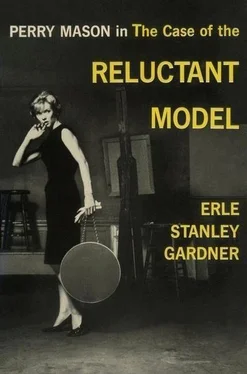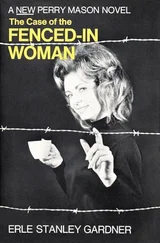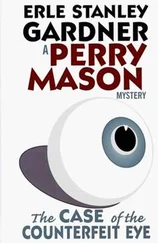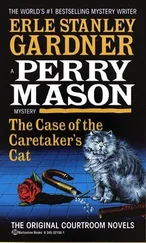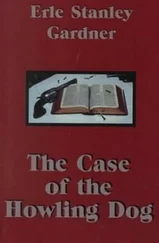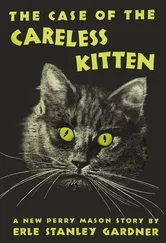“And did you tell him anything you had done in connection with that litigation?”
“Yes, I told him that I had signed an affidavit in your office, stating that Mr. Durant had told me the Phellipe Feteet in Otto Olney’s yacht was a fake.”
“And it was after you had made that statement to Mr. Durant that he told you to get out of town?”
“Yes.”
“Now I’m going to ask you, Maxine, if Mr. Durant had some hold on you?”
“He did, yes.”
“There was some bit of information that he was threatening to disclose if you did not do as he wished?”
“Yes.”
Mason said, “If the Court please, I feel that this painting should now be introduced in evidence.”
“We object to having the painting introduced in evidence at this time,” Hamilton Burger said. “There is nothing to show that it is a forged Phellipe Feteet painting, there is nothing to show that it ever hung on the wall of the main salon in Otto Olney’s yacht and—”
“We don’t claim that it ever hung on the wall there,” Mason said. “We don’t think it did.”
“What?” Judge Madison asked, puzzled.
“I think, if the Court please,” Mason said, “the plot was much deeper than appeared on the surface.”
Hamilton Burger said, “Of course, if the Court please, this whole thing is extraneous except as it shows motivation for murder, and we want to develop that gambit on cross-examination. However, let us suppose that the decedent was a swindler who was engaged in an attempt to swindle Mr. Olney or Mr. Rankin or both; that still doesn’t give the defendant the license to murder him. We don’t have an open season on swindlers, nor do we have an open season on blackmailers.”
Judge Madison said, “The fact remains, Mr. Mason, that this painting which has been marked for identification is so far an isolated issue in the case. In other words, a witness has testified that the decedent paid him to make several paintings. But that witness said, unless I misunderstood him, that this painting was one he had been hired to make but he didn’t state specifically it was Durant who had employed him to make it. Now the defendant has testified that this painting looks like one that was hanging in the main salon of a yacht, and which Durant told her was a forgery. But we haven’t established that it is either a copy, or a forgery, or the original.”
“Exactly,” Mason said, “and I want to be able to establish exactly what it is.”
“Well, go ahead and establish it,” Judge Madison said. “For all the present testimony shows, this could be the original. It looks too good to be a copy.”
“In order to establish what it is,” Mason said, frowning thoughtfully, and apparently conceding the point reluctantly, “I would have to withdraw this witness temporarily and ask some more questions of the previous witness, Goring Gilbert.”
“Very well,” Judge Madison said, “if you want to get that painting in evidence at this time we will have a voir dire examination in regard to the painting. You may step down, Miss Lindsay, and Mr. Gilbert will take the stand.”
Hamilton Burger half got to his feet as though to object, then hesitated and dropped back into his chair.
Mason, biting his lip, apparently with annoyance, turned so that his back was to Hamilton Burger and gave Della Street a reassuring wink.
Gilbert once more took the stand.
“Were you hired to make a copy of a painting that was in the yacht of Otto Olney?”
Gilbert said, “Yes.”
“And you made such a copy?”
“Yes.”
“And this painting which I now show you, which is marked for identification as Defendant’s Exhibit Number One, was that painting?”
“Yes.”
“You were paid for it?”
“Yes.”
“How much?”
“Two thousand dollars.”
“How were you paid?”
“Haven’t we gone all over this?” Judge Madison asked.
“This is now preliminary merely and I want to be sure the foundation is in,” Mason said, glancing surreptitiously at the clock.
“Very well, very well,” Judge Madison said. “Go ahead.”
“I was paid two thousand dollars in cash, in the form of twenty one-hundred-dollar bills.”
“And you made this copy?”
“I did.”
“I think that’s all the questions I have of this witness,” Mason said. “I take it the prosecutor has no desire to cross-examine this witness.”
“On the contrary,” Hamilton Burger said, “the prosecution certainly does intend to cross-examine this witness. And while the prosecution intends to give the defense counsel every latitude in asking questions of the defendant, the prosecution intends to object to the introduction of this painting at this time. It hasn’t been connected up with anything.”
“This is on voir dire to identify the painting,” Judge Madison said. “It is a limited proceeding, simply for the purpose of laying a foundation.”
“That’s why I want to cross-examine the witness.”
“Very well, go ahead,” Judge Madison ordered. “We still have a few minutes before adjournment.”
“I doubt if I can complete my cross-examination before time for adjournment.”
“It’s all right. Go ahead and start your questions.”
“When did you first talk with Durant about copying pictures?” Hamilton Burger asked.
“About a year ago.”
“And you made copies of several pictures for him?”
“Not exact copies. I copied the style, not the picture.”
“But this picture is an exact copy?”
“Yes.”
“Of a painting owned by Otto Olney?”
“Yes.”
“And Durant paid you to make this copy?”
“No.”
“What?”
“I said no.”
“Oh, I see. He didn’t pay you, so you retained possession of the picture, is that right?”
“No.”
“Didn’t you say you were paid two thousand dollars in hundred-dollar bills for making this picture?”
“Yes.”
“And then you retained the picture?”
“Yes.”
Burger, suddenly suspicious of a trap, hesitated, then bent over for a whispered conference with Dexter.
After a few seconds he straightened and said, “Did the defendant pay you to make this copy?”
“No.”
“Who did?”
“It has no connection with this case, so I am not going to divulge the name of my client.”
“Whether it has any connection with this case isn’t for you to say, young man,” Hamilton Burger thundered. “I want an answer to my question.”
“Just a moment,” Mason said. “The district attorney is not entitled to an answer to that question unless he concedes that the painting is pertinent to the case. If the painting is entirely without the issues of this case, then the district attorney isn’t entitled to an answer to that question.”
“You’ve made it a part of the case,” Hamilton Burger said. “I have a right to cross-examine the witness on anything you’ve brought out on direct examination.”
Mason said, “I didn’t bring out the name of the person who had hired him to make the painting.”
“I understood it was Collin Durant,” Burger said.
“Go back and look at the testimony,” Mason said, “and you’ll see the witness never said it was Collin Durant.”
“Well, I’m entitled to an answer to my question.”
Mason said, “If the Court please, the prosecution can’t eat its cake and have it too. If the prosecution wants to stipulate that this painting is a part of this case and that it is a material factor in the case, then I am entitled to have the painting introduced in evidence and the prosecutor can force the witness to answer this question, unless, of course—” here Mason paused and glanced significantly at the witness, slowing his diction so the words came slowly and distinctly — “unless, I repeat, he should state that the answer to that question would involve him in a crime, in which event the witness couldn’t be forced to answer the question. ”
Читать дальше
